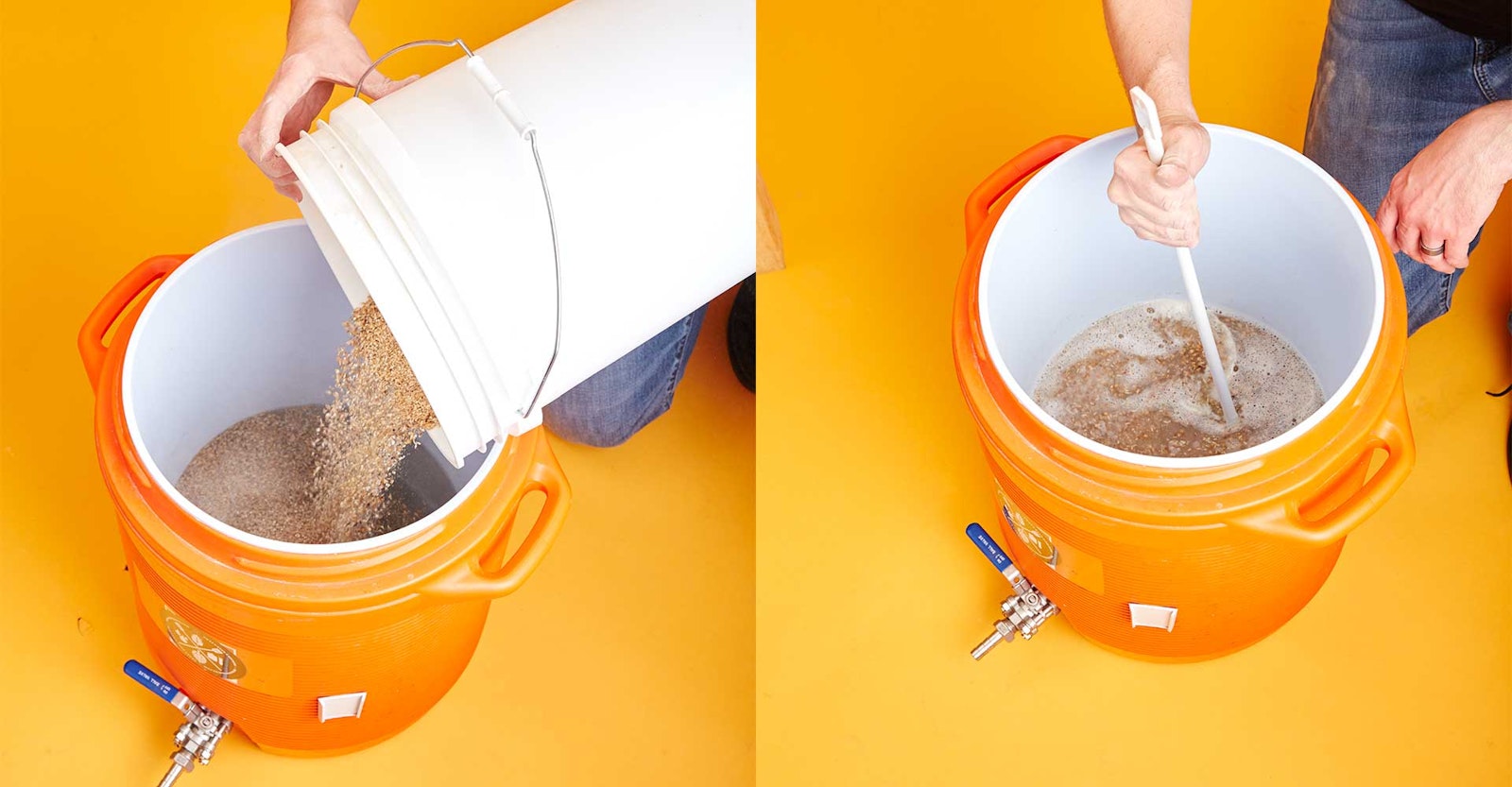For beginning all-grain brewers, efficiency is the least of their worries. It’s far more important to get the process down and end up with something drinkable. But once you get comfortable with mashing, you might wonder whether you’re doing the best you can. Maybe your beers always seem a little short on volume when you follow someone else’s recipe, or maybe you’re hoping to save some money on grain. There are a number of different areas of brewing efficiency, but I’m going to focus on improving your mash process, in particular, to make sure that your starch conversion is delivering the gravity points you deserve. I’ll skip the mathematical formula for calculating efficiency compared to the ideal, because we really need to understand what happens in your mash tun first.
Starch Conversion: An Overview
Malted barley is a self-contained package for creating the wort we brew with. The bulk of the grain is starch, but it also has the enzymes needed to break that starch down into sugar. The mash process provides all the necessary elements. Crushing the grain and soaking it in water gives the enzymes direct access to the starch. The chemistry works best if the right environment is set up, which requires getting the pH between 5.2 and 5.6 and selecting a saccharification temperature between 148° and 158°F (64 and 70°C). Finally, we have to give the mash enough time for conversion. While some people push the envelope and, based on iodine tests, consider 15–30 minutes sufficient, the standard practice is to aim for about an hour.
What Hinders Conversion?
There are many issues to consider when it comes to fine-tuning your mash. The most common issue is that the enzymes have problems reaching their target. Often this is due to the grist being too coarse, with large chunks that the enzymes can’t easily break down. Before you mash in, take a look at your grist. Are the husks mostly intact, but separated from the white endosperm of the kernel, and are those interior pieces broken into smaller bits?
If the latter isn’t the case, you should go for a finer crush, either by changing your roller setting or running the grain through the mill for a second time. Don’t go too far, though—you don’t want to pulverize the grain because powdered husks will add astringent tannins and make it tough to sparge. Your goal is to minimize the size of the crushed kernels and maximize the size of the husks. If you can’t find the right balance, you might consider wet-milling the grain at the finer setting, where the dampness keeps the husk from shredding.
Another culprit might be that you haven’t stirred your mash well enough. Bubbles of dry malt can be hidden within the porridge of the mash and the enzymes will never get inside. This is most often seen when the grain and water are dumped together en masse. The best practice is to add half your strike water to the mash tun, then add half the grain and stir well. Repeat with the remaining strike water and grain and stir well. It’s vital to take the time to stir thoroughly during dough-in (this initial mixing of malt and water). A thinner mash (one with more water) will also help prevent bubbles of dry malt.
Looking Beyond the Obvious
If your grist looks good and you’ve stirred out all the dry lumps in your mash, there are still a few things to check. Remember that the goal is for enzymes to convert the starch locked within the grain. It may be that you don’t have enough enzymes to do the job. If the malt is old—especially if it was milled some time ago—the enzymes might have denatured.
Also, different malts have varying amounts of enzymes available. You can look up the diastatic power (DP—the measure of enzymatic strength) of common malts, which will give you a sense of how effective each one is at converting starch on its own. The usual base malts, such as American 2-row or Pilsner malt, are pretty strong, but others, such as Munich dark or more heavily kilned malts, may provide little or no enzymes at all. This tends to be a bigger issue for partial mash batches, which emphasize specialty grains. (For more information about the DP of various malts, see “Get to Know Your Malt.”)
If diastatic power doesn’t seem to be the issue, take a look at your mash environment and duration. Calibrate your thermometer and double check that your mash is holding its temperature. It might also be worthwhile to check the pH to make sure you’re in the right range (Remember, between 5.2 and 5.6).
These suggestions should get your malt conversion in good shape. Part two will cover lautering efficiency: getting all that sugar into your brew kettle.








